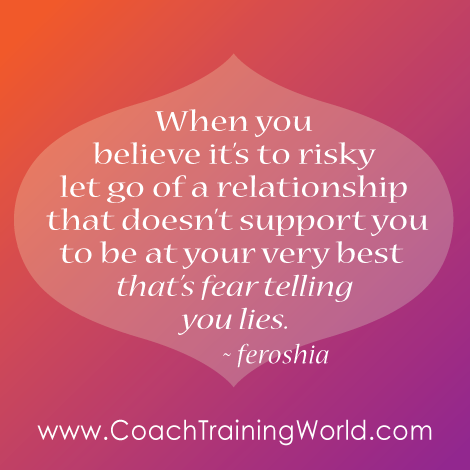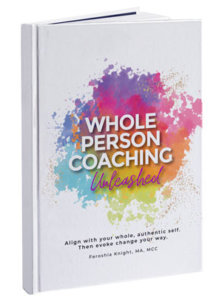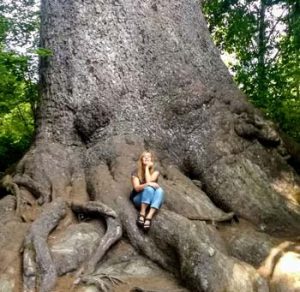What I’m about to say is definitely not going to earn me the popular vote. But here I go: it’s time we stand up and fully embrace our deepest fears for the tremendous gift they have given us. In fact, if it wasn’t for our drive toward self-preservation (one ingrained at a cellular level), it’s likely you and I wouldn’t even exist on the planet today.
Imagine yourself right now in the year 40,000 B.C., naked except for the latest fashion in bison and mammoth skins. You stand immersed in a dense forest. You’re crouched behind lush green foliage and alongside a cold stream that gurgles away toward snow-capped mountains in the distance. A fish jumps in a pool you’ve had your eye on just a few yards away. You move closer, line and hook in hand, to get a better position.
You have…
No claws.
No sharp teeth.
No real protection.
Nothing… but your fellow tribespeople.
You are naked in every sense of the word; vulnerable to almost any predator bigger than you, and any number that are not.
Despite the odds against our survival at this early stage, we as a species still exist today, and in much the same shape and appearance. Yet some things have definitely changed. We live isolated in our respective cities and villages, now at the top of the food chain. The community fires our pre-historic ancestors gathered around for protection and warmth are now replaced by the digital tribes of Facebook, Instagram and Google+.
At the dawn of our existence, fear was a good thing. It kept us safe. It also kept us together. From a survival point of view, fear is our friend.
You’ve probably noticed with any kind of major threat, real or perceived, it’s fear that bands us together with others. The 9/11 tragedy is a perfect example. Even today people remain connected through its traumatic impact.
Fear has its place in our lives. As far as I can tell, it will always be part of us.
Fear is the most powerful, influential emotion you will ever encounter.
Fear is an unpleasant emotional response to physical or emotional danger.
It’s caused by a belief that someone or something is dangerous, likely to cause pain, or threaten our safety, situation or those we care about. It is an innate response intended to ensure our survival and dates to the earliest days of our species when were under constant threat of mortal danger by larger, more powerful predators.
Although, we can be thankful for fear keeping us alive this long (and dare I say flourish?), this once primal fear has extended its reach. What was once known as the “fight, flight or freeze response” now has a new form: aggression, avoidance and absence.
Perhaps you recognize a few of these behaviors in yourself or others:
- You feel angry, frustrated and unconsciously lash out at someone, often someone close to you.
- You repeatedly beat yourself up over something that could have gone better.
- You do everything in your power to avoid a person or situation.
- You avoid taking care of your own needs, desires and feelings because other people are more important.
- You retreat into the safety of your comfort zone and isolate yourself as if nothing was happening – waiting for the storm to pass.
- You disown aspects of your personality to protect yourself from feeling like an outcast inside a group.
If you found yourself in one of more of the above, don’t worry. We all go there at least once in a lifetime. Because we are trying to escape the deep discomfort we feel inside, our modern fight, flight or freeze response becomes an attack on others, on ourselves, and most often a combination of the two.
This modern version of fear (False Evidence Appearing Real) is the villain that keeps people in dead-end jobs despite their countless complaints about the hours, pay and a boss that overlooks their potential. It is also the reason most of us stay in relationships that no longer serve us or are even detrimental to our well-being.
When you believe there is more risk in letting go than staying with something that no longer serves you, that’s fear manipulating you.
The beauty of fear (and any strong emotion) is that it has multiple dimensions.
You can “hear” the voice of fear in your thoughts and beliefs. You can feel the sensation of it coursing through your body. When fear is present, you are likely to feel additional emotions.
Because there are multiple dimensions to fear, there are also multiple intervention points.
And this means you can turn any fear story into a love story, working with the details.
In fact, that’s what we do as Whole Person Coaches. We help our clients rewrite the story of their lives so they can move through the world as they truly are, not just an outdated version of themselves.
When we meet again, I’ll dive into the deeper dimensions of fear and how to harness it for good.
For now, I want you to know that fear is a universal experience. No one is alone in it.
The practice of relenting to the undermining forces of fear and doubt is not limited to a particular group of individuals. Despite socioeconomic standing, national origin, race, sex, creed, and sexual orientation, we all deal with many of the core issues related to our most intimate fears constantly throughout life.
The trick is to welcome fear for the gift it is. After all, it is the reason you are here with me today.
Dear friend, I know it’s scary to talk about our fears. But when you shift your perspective on all that false evidence that only appears real, fear loses its power pretty quick. This is especially true when you are speaking with someone who can lend an empathetic ear.
- Who do you have in your life that has your back?
- In what environments do you feel most safe to talk about your fears or worries?
- What do you fear the most that you’d like to change?
- Who can you talk to it about right now that would be supportive and empathetic with you?



